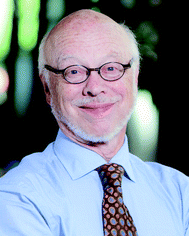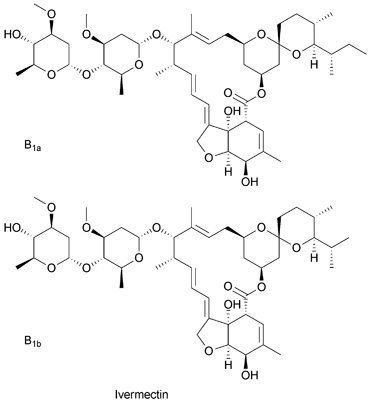Recognition of the role of Natural Products as drugs to treat neglected tropical diseases by the 2015 Nobel prize in physiology or medicine
James H.
McKerrow
Skaggs School of Pharmacy and Pharmaceutical Sciences, University of California San Diego, La Jolla, California, USA
Abstract
The 2015 Nobel Prize in Physiology or Medicine recognised the advances made in treating neglected tropical diseases, using drugs whose origins lie in natural products.
The 2015 Nobel Prize in Physiology or Medicine was awarded to three scientists who made pioneering discoveries of drugs currently used to treat neglected tropical diseases. Neglected tropical diseases (NTDs) refer to a group of global health problems affecting hundreds of millions of people. They are considered “neglected” because they affect poor people in poor regions of the world and therefore offer little or no economic value to the pharmaceutical industry. The recognition by the Nobel Committee of these scientists and their work is important for two reasons. The first is that they have targeted parasitic diseases that affect the world's poorest populations, and therefore represent a huge barrier to improving human health. The second important factor is that the drugs they developed had their origins in natural products.
William C Campbell and Satoshi Omura discovered and developed avermectin and its analog ivermectin as a treatment for river blindness and lymphatic filariasis.1,2 Omura, a Japanese microbiologist from the Kitasoto Institute, isolated a group of Streptomyces bacteria from the soil. He successfully cultured new strains of Streptomyces and passed on these cultures to William Campbell, an expert in parasite biology working in the USA at Merck. Campbell identified a component from one of the cultures that was active against roundworms such as those that produce river blindness (onchocerciasis) and lymphatic filariasis (elephantiasis). Ivermectin was later adopted by the World Health Organization for blocking transmission of river blindness and lymphatic filariasis through its activity against the microfilarial form of the parasite. Microfilariae are released by adult parasites into the skin in the case of river blindness and in the lymphatic system in the case of the lymphatic filariasis, from which they are ultimately picked up by an insect vector for transmission to a new host. The effectiveness of ivermectin against this form of the parasite resulted in virtual eradication of river blindness from the New World. While Merck has reaped profits from the use of ivermectin in veterinary medicine, the company has donated the drug free to agencies treating people with roundworm infections. In a quote of interest to the natural products research community, Omura said, “I merely borrowed the power of microbes”.
Youyou Tu graduated from the Pharmacy Department at Beijing Medical University in 1955. While trained in Western medicine, she also developed an interest in traditional Chinese medicine and was at the Academy of Traditional Chinese Medicine in the 1960s when Mao Zedong sought a solution to an urgent medical problem. North Vietnam was at war with the United States (in what we in the US refer to as the Vietnam War and in Vietnam they call the American War). Malaria was incapacitating or killing North Vietnamese soldiers. Youyou Tu, guided by ancient Chinese texts, isolated a component from the plant Artemesia annua, called artemisinin, which proved to be highly effective against the malaria parasite.3 Artemisinin has now become the drug of choice for the treatment of malaria throughout most of the tropical world.
The recognition of these scientists by the Nobel committee provides validation to the research community focusing on the development of new drugs, vaccines, and diagnostic agents targeting neglected tropical diseases. Because of the relative lack of interest by the pharmaceutical industry, and the prevalence of these diseases primarily in the tropical world, there has been little funding and a paucity of interest in NTD research. Hopefully the awarding of these Nobel prizes will be a clarion call to the value of this work.
Also noteworthy is the fact that the drugs discovered and developed by these scientists had their origin in natural products. The last two decades has seen a move by the pharmaceutical industry away from natural products as a source of drugs. There are many reasons for this including the chemical complexity of natural products, and difficulties in identifying sustainable sources and manufacture. Modern techniques in natural products chemistry, acquisition, isolation, and structural analysis, have overcome many of the challenges perceived to limit their use. The recognition that natural products from fermentable organisms can be a renewable source, coupled with high throughput methods of separation and structural analysis have rejuvenated the field. In addition, modern genome technology has opened up the possibility of identifying biosynthetic pathways for natural products and therefore moving biosynthesis from parent organisms to more tractable bioreactors.
While calling attention to the need for new drugs to treat NTDs, the work of these three scientists is just the beginning. Malaria, river blindness, and lymphatic filariasis are only three of the over 10 neglected tropical diseases that plague human populations. As might be expected, the drugs currently used are limited by toxicity, limited efficacy, long or inappropriate dosing regimens, and drug resistance. While ivermectin has been key to blocking transmission, it does not kill the adult nematode parasites that are the source of microfilariae. The malaria parasite is notorious for its ability to become resistant to drugs. There is already concern about resistance to artemisin in Southeast Asia. Clearly another generation of drugs is needed and a new generation of young scientists needs to be encouraged to enter the field.
Funding agencies and international philanthropic or nonprofit organizations are only beginning to recognize the importance of the chemical space represented by natural products for the discovery and development of drugs against neglected tropical diseases. Hopefully the recognition of the work of these three scientists will stimulate funding and research in global health, and also be an incentive for investment in natural products research.
References
- R. W. Burg, et al. , Antimicrob. Agents Chemother., 1979, 15, 361–367 CrossRef CAS PubMed.
- J. R. Egerton, et al. , Antimicrob. Agents Chemother., 1979, 15, 372–378 CrossRef CAS PubMed.
- Y. Y. Tu, et al. , Yaoxue Xuebao, 1981, 16, 366–370 CAS (Chinese).
| This journal is © The Royal Society of Chemistry 2015 |



